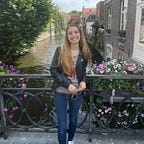Behind the Screens: Adore Adore
We tend to talk a lot about Connecter and Digital Asset Management, so we thought it was about time to let someone else share their experience. We contacted some of our clients with unique and innovative businesses to ask them a bunch of questions on what they think about our DAM solutions to show you the diverse applications it has.
The following long-term Connecter user we want to introduce is Adore Adore. This boutique 3D visualization company is based in the vibrant cities of Gothenburg and Malmö, Sweden.
With a legacy spanning over a decade, they specialize in delivering top-tier visual solutions to a diverse clientele. Their expertise extends to architecture firms, real estate developers, advertising agencies, interior designers, product design studios, and beyond. Through their unwavering commitment to excellence, Adore Adore crafts captivating, expressive artwork that elevates every project they take on.
We’ve been following their development over the years and are thoroughly impressed by the caliber of their work. So, let’s see a bit more about the way they operate.
We’ve talked to Joakim Stenkvist, co-owner of Adore Adore. The founder/partner mainly works as a 3d artist and sometimes as a drone photographer and web designer.
What does Adore Adore do?
We are primarily focused on architectural visualization, making still images, animated videos, and interactive solutions.
Apart from Archviz, we also create product visualizations (animations and images), often for advertisement agencies and product designers. We are sometimes hired as drone photographers for real estate projects and create websites for clients.
How big is your asset library, and how do you go about organizing it?
According to the tagging info in the Connecter app, our library contains approximately 2,300 3d models, but in reality, it’s a bit larger than that because we haven’t added everything to it.
We are also working on adding materials to Connecter, so the library will likely grow some more soon. :)
Regarding organization, we have two main categories for 3d models, “Interior” and “Exterior” and within these are subcategories like “Accessories,” “Chairs,” “Sofas,” “Tables,” “Trees,” “Bushes,” “People,” “Vehicles,” and so on. Additionally, we have categories for HDRI-s and Materials.
How long have you been using Connecter, and what made you choose it?
I am not entirely sure how long, but it has probably been more than ten years. We often bought 3d models from Design Connected, which is how we learned about Connecter. When we tried it out, we liked the clean UI and good tagging system.
Before getting Connecter Suite, I remember that it was a bit trickier to set up the database and access it remotely from different computers. Now, though, things run really smoothly.
How long did it take to integrate Connecter into your workflow?
Since it was quite long ago, I don’t remember exactly how long it took. However, there was not really any resistance or hurdles.
Personally, I like having a good structure in the library, so I kind of enjoy tagging stuff and arranging it in different categories and subcategories.
Has Connecter contributed to collaboration and communication within your team?
Ever since we started Adore Adore, we have used a cloud-based solution for our asset library and projects. So, even before Connecter, the team members had access to the same files remotely.
However, being able to add thumbnails to 3d models and easily drag them into 3ds Max from one single place definitely improved our workflow and simplified communication.
Can you share what software stack you typically use?
We use a pretty standard set of software — 3ds Max as the main solution, coupled with Corona Renderer and a bunch of plugins such as RailClone, Forest Pack, Tyflow, Phoenix FD, and Grow FX.
Our choice for video and image editing is within Adobe’s ecosystem — After Effects and Photoshop.
Which Connecter features do you find valuable the most in your day-to-day tasks?
We use it in most of our projects, so it is part of our daily routine. So far, we have only used the 3ds Max integration, but I have noticed there is also an Unreal Engine Integration, which would be interesting to check out sometime.
Honestly, most of the time, I just select different models and drag them into 3ds Max, but I plan on testing other features, like Collections and Dynamic Subsets since they seem very useful.
What tips or tricks have you discovered while using Connecter that might be helpful to others?
One really good feature is “Manage External Files,” which lets you change file paths within a Max file without having to open it in 3ds Max. Thus, if you have incorrect paths, you can easily fix them.
I also like that we can add RailClone objects in Connecter. If you have a setup containing RailClone objects and other regular 3d objects, this can be really handy.
Now, you’ve got a nice idea of how professional visualizers like the ones in Adore Adore utilize Connecter. We’re confident that their intention to try and integrate features like Collections and Dynamic Subsets will pay off.
The integration with Unreal Engine should also not be underestimated, as it has some great functionalities that are sure to improve any workflow.
Stay tuned for more DAM insights from professionals across different industries. If you want to learn more about Adore Adore, check out their website and social media channels.
